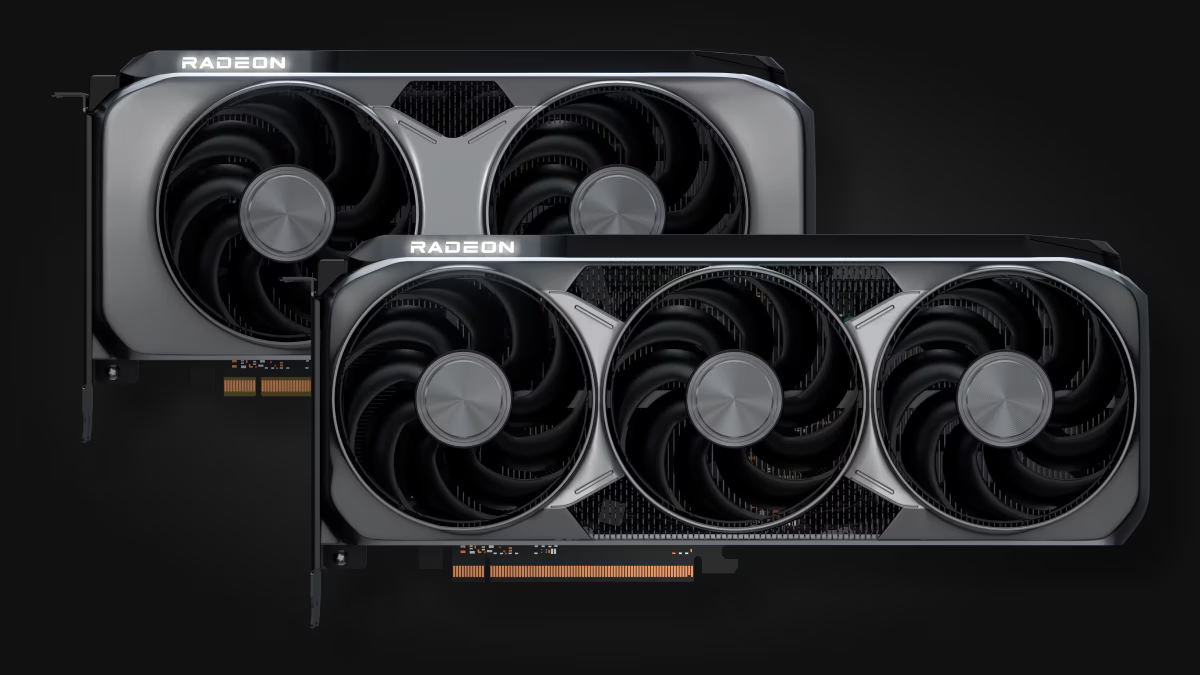Reviews show AMD's RX 9070 GRE trails the RTX 5070 in raster — ray tracing is on par, and it's $50 cheaper

With the retail embargo lifting tomorrow, reviews of AMD's China-exclusive RX 9070 GRE have gone live. Hardware publication EXPreview has published its review of a custom model from XFX, providing us with insight into the card's performance and where it stands versus the competition. Positioned as an intermediary between the RX 9070 and the soon-to-launch RX 9060 XT, the RX 9070 GRE is a series of hits and misses. It trails the RTX 5070 in rasterization, and its pricing doesn't really add to its value versus AMD's own RX 9070.
Around 10 days ago, the RX 9070 GRE unexpectedly became available for pre-order across major Chinese online stores. AMD later officially confirmed the card, but it is currently region-locked, with no word on when it might hit the global market. Under the hood, it carries a cut-down Navi 48 GPU wielding 3,072 Stream Processors (48 CUs) — roughly 25% fewer than the RX 9070 XT. It offers 12GB of GDDR6 memory at slower 18 Gbps speeds, but that is likely an artificial limitation.
The GPU launched at 4,199 RMB ($575). For context, the RX 9070 and RTX 5070 both debuted at 4,499 RMB ($625). Saving $50 means you'll be missing out on exclusives, like RTX HDR, VSR, Smooth Motion, and MFG found on the RTX 5070, and the extra VRAM and compute power with the RX 9070 that can enable 4K gaming. The RX 9070 GRE does not have an MBA (Made By AMD) variant, similar to other RX 9070 GPUs. The model under review is the XFX RX 9070 GRE Snow Wolf, a pure-white card with a triple-fan cooler and dual 8-pin connectors. Internally, the card is equipped with 20 Gbps GDDR6 modules from Samsung, so you might be able to extract some performance gains by memory overclocking.
Across a suite of games at 1440p, the RTX 5070 appears to be on average 5-10% faster than the RX 9070 GRE in raw rasterization performance. Based on our testing, we expected this to translate to a 15-20% performance gap versus the RX 9070, expanding to almost 30% versus the RX 9070 XT. The RX 9070 GRE easily outperforms the RTX 5060 Ti, which is expected with the price difference between the two. What's interesting is the raytracing performance, where the RX 9070 GRE appears to — surprisingly — keep pace with the RTX 5070 in a handful of titles.
Games (1440p) | RX 9070 GRE (FPS) | RTX 5070 (FPS) | RTX 5060 Ti (FPS) | RX 9070 GRE vs RTX 5070 |
|---|---|---|---|---|
Borderlands 3 (Raster) | 135 | 134 | 100 | 0.74% |
Forza Horizon 5 (Raster) | 143 | 157 | 127 | -9.79% |
Assassin's Creed: Shadows (Raster) | 50 | 54 | 42 | -8.00% |
Far Cry 6 (Raster) | 163 | 166 | 128 | -1.84% |
Cyberpunk 2077 (Raster) | 100 | 110 | 81 | -10.00% |
F1 24 (Raster) | 187 | 186 | 144 | 0.53% |
Rainbow Six Siege (Raster) | 247 | 301 | 229 | -21.86% |
Black Myth Wukong (Raster) | 36 | 43 | 32 | -19.44% |
Assassin's Creed: Shadows (RT) | 39 | 39 | 30 | 0.00% |
F1 24 (RT) | 104 | 100 | 73 | 3.85% |
Cyberpunk 2077 (RT) | 41 | 46 | 35 | -12.20% |
Far Cry 6 (RT) | 142 | 140 | 111 | 1.41% |
Much of the same story repeats at 4K, where both GPUs are held down by the 12GB framebuffer. At idle, this specific RX 9070 GRE model draws 9.3W of power, jumping to 245W under load, with a peak of 317W. Once adjusted for global prices, the RX 9070 GRE's MSRP translates to roughly $500 (minus the 13% VAT). In a world where RDNA 4 GPUs were readily available, the RX 9070 GRE would've been another upsell for the RX 9070, which already acts as a stepping stone for the RX 9070 XT.
That said, it's important to remember the RX 7900 GRE also launched with a steep $700 price tag in China before its global launch at $549. In any case, RX 9070 GRE GPUs, along with pre-built systems from System Integrators, will be available for purchase tomorrow in China.
Follow Tom's Hardware on Google News to get our up-to-date news, analysis, and reviews in your feeds. Make sure to click the Follow button.
Get Tom's Hardware's best news and in-depth reviews, straight to your inbox.

Hassam Nasir is a die-hard hardware enthusiast with years of experience as a tech editor and writer, focusing on detailed CPU comparisons and general hardware news. When he’s not working, you’ll find him bending tubes for his ever-evolving custom water-loop gaming rig or benchmarking the latest CPUs and GPUs just for fun.